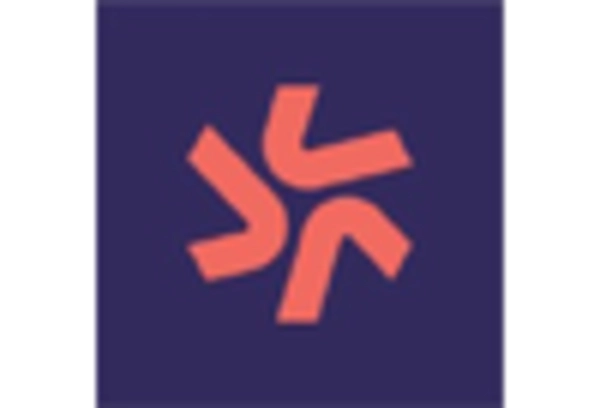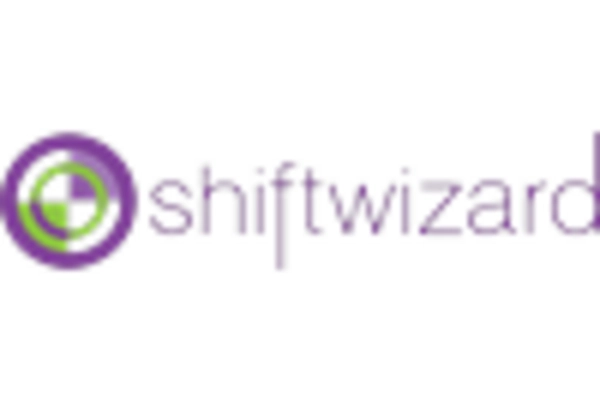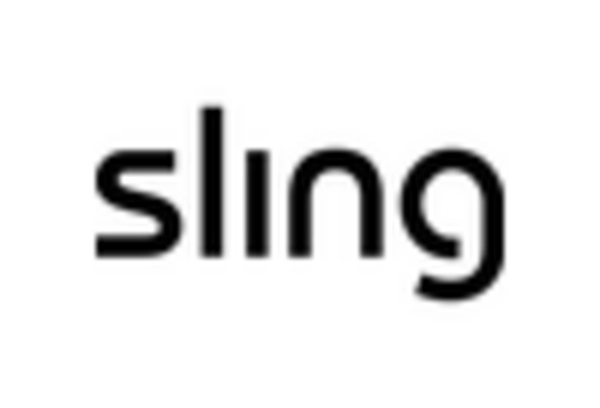Growing Emphasis on Employee Well-being
The On Call Scheduling Software Market is witnessing a growing emphasis on employee well-being, which is influencing scheduling practices. Organizations are increasingly aware that employee satisfaction directly impacts productivity and retention rates. Data shows that companies that implement fair scheduling practices see a 20% increase in employee morale. On-call scheduling software plays a pivotal role in this shift by providing tools that promote equitable distribution of on-call duties and allow employees to manage their availability effectively. By prioritizing employee well-being through thoughtful scheduling, organizations not only enhance their workplace culture but also improve service delivery and operational outcomes.
Regulatory Compliance and Accountability
The On Call Scheduling Software Market is significantly shaped by the need for regulatory compliance and accountability. Many sectors, particularly healthcare and public safety, are subject to stringent regulations regarding staffing and response times. Non-compliance can result in severe penalties and reputational damage. Recent findings indicate that organizations utilizing on-call scheduling software are 35% more likely to meet compliance standards. This software aids in maintaining accurate records of employee hours and availability, ensuring that organizations can demonstrate accountability to regulatory bodies. As compliance requirements continue to evolve, the demand for robust scheduling solutions that facilitate adherence to these standards is expected to grow.
Rising Complexity of Workforce Scheduling
The On Call Scheduling Software Market is increasingly influenced by the rising complexity of workforce scheduling. As businesses expand and diversify, the intricacies of managing employee schedules grow significantly. This complexity is particularly pronounced in industries with fluctuating demand, such as healthcare, where staffing needs can change rapidly. Data indicates that organizations face a 40% increase in scheduling conflicts without effective software solutions. Consequently, the demand for sophisticated scheduling tools that can accommodate various shifts, roles, and compliance requirements is surging. On-call scheduling software provides the necessary flexibility and adaptability, enabling organizations to respond promptly to changing circumstances while maintaining operational efficiency.
Technological Advancements in Communication Tools
The On Call Scheduling Software Market is being propelled by technological advancements in communication tools. Enhanced communication capabilities facilitate seamless coordination among team members, which is crucial for effective on-call scheduling. Recent statistics suggest that organizations leveraging integrated communication platforms alongside scheduling software experience a 25% reduction in response times. This integration allows for instant notifications and updates, ensuring that all personnel are informed of their schedules and any changes in real-time. As technology continues to evolve, the expectation for more integrated solutions will likely drive further adoption of on-call scheduling software, enhancing overall operational efficiency and responsiveness.
Increased Demand for Efficient Resource Management
The On Call Scheduling Software Market is experiencing heightened demand for efficient resource management solutions. Organizations are increasingly recognizing the necessity of optimizing their workforce to enhance productivity and reduce operational costs. According to recent data, companies utilizing scheduling software report a 30% improvement in resource allocation efficiency. This trend is particularly evident in sectors such as healthcare and emergency services, where timely response is critical. As organizations strive to streamline operations, the adoption of on-call scheduling software becomes essential, allowing for real-time adjustments and better management of personnel availability. This shift not only improves service delivery but also contributes to employee satisfaction by minimizing burnout and ensuring fair distribution of on-call duties.


















Leave a Comment